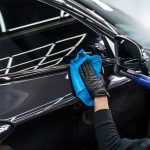1. Introduction to Natural Fibers in Automotive Design
As the automotive industry evolves, there is a growing shift toward sustainability and eco-friendly materials. One of the promising solutions is the use of natural fibers such as hemp, bamboo, flax, kenaf, and jute. These fibers offer a sustainable alternative to traditional materials used in vehicle manufacturing. Automakers are increasingly exploring their potential due to their lightweight properties, durability, and environmental benefits.
Why Natural Fibers?
Natural fibers have been used for centuries in various industries, but their role in automotive design has gained significant attention in recent years. Their advantages include:
- Lightweight: Natural fibers are significantly lighter than conventional materials like glass fiber, contributing to fuel efficiency.
- High Strength-to-Weight Ratio: Some natural fibers, such as hemp and bamboo, offer impressive strength while keeping weight low.
- Renewable and Sustainable: These fibers can be grown and harvested quickly, making them a more sustainable material choice.
- Reduced Carbon Footprint: Replacing synthetic materials with natural fibers can lower emissions in vehicle production.
- Biodegradability: Unlike plastic-based components, many natural fiber composites decompose more easily, reducing environmental waste.
Key Natural Fibers in Automotive Applications
Several types of natural fibers are being explored in automotive design. Here’s a comparison of commonly used natural fibers in the industry:
| Natural Fiber | Key Properties | Common Uses in Automotive |
|---|---|---|
| Hemp | Lightweight, strong, eco-friendly | Door panels, interior trims, seat covers |
| Bamboo | Fast-growing, durable, flexible | Dashboard panels, flooring, seat components |
| Flax | Strong, biodegradable, vibration absorption | Composite panels, insulation, interior components |
| Kenaf | Good tensile strength, lightweight | Underbody panels, door inserts |
| Jute | Cost-effective, sound insulating | Floor mats, headliners, soundproofing |
Growing Role of Natural Fibers in the Automotive Industry
The automotive industry is under increasing pressure to adopt sustainable practices. Major car manufacturers are already incorporating natural fiber composites into their vehicle designs. As fuel efficiency and environmental regulations become stricter, the demand for lightweight, renewable materials like hemp and bamboo continues to grow.
With advancements in natural fiber processing and biocomposite development, we can expect to see broader adoption of these materials, leading to more eco-friendly cars and a reduced environmental impact.
2. Advantages of Using Natural Fibers
Natural fibers such as hemp and bamboo are increasingly being used in automotive design due to their numerous advantages over traditional materials like steel, aluminum, and synthetic composites. These benefits make them a strong contender for the future of sustainable vehicle manufacturing.
Sustainability
Unlike petroleum-based materials, natural fibers are renewable resources that grow quickly and require fewer chemical inputs. Hemp, for example, can be cultivated with minimal water and pesticides, making it an eco-friendly option for automotive applications.
Weight Reduction
Natural fibers are significantly lighter than conventional materials used in car interiors and body panels. This weight reduction contributes to improved fuel efficiency in traditional vehicles and greater range in electric vehicles, helping manufacturers meet strict emissions and efficiency standards.
Strength and Durability
Despite their lightweight nature, materials like hemp and bamboo offer impressive strength. They provide high tensile strength and good impact resistance, making them ideal for vehicle components like door panels, dashboards, and insulation materials.
| Material | Weight Reduction | Strength | Environmental Impact |
|---|---|---|---|
| Hemp Fiber | 50% lighter than fiberglass | High tensile strength | Biodegradable & renewable |
| Bamboo Fiber | 30% lighter than plastic | Strong & flexible | Fast-growing, low energy use |
| Traditional Plastic | Heavy | Moderate strength | Non-biodegradable, fossil-based |
Biodegradability
One of the most promising aspects of using natural fibers in automotive design is their biodegradability. Unlike plastic and fiberglass, which take centuries to decompose, hemp and bamboo-based composites break down more easily, reducing long-term environmental impact.
Lower Environmental Impact
Producing natural fiber-based components generates fewer CO2 emissions compared to manufacturing synthetic alternatives. Additionally, the plants used for these fibers absorb carbon dioxide during their growth cycle, providing an extra environmental benefit.
Why Automakers Are Making the Shift
With increasing regulatory pressure and consumer demand for greener vehicles, the automotive industry is investing more in natural fibers. Companies are exploring ways to integrate these materials into their designs, making cars not only more eco-friendly but also lighter, stronger, and more cost-efficient in the long run.

3. Current Applications in the Automotive Industry
Automakers are increasingly turning to natural fibers like hemp, bamboo, flax, and kenaf to improve sustainability, reduce weight, and enhance vehicle performance. These materials are now being used in various components, from interiors to body panels and composites.
Natural Fibers in Vehicle Interiors
Many car manufacturers have integrated natural fibers into interior components such as door panels, dashboards, and seats. These materials help reduce plastic usage and offer a more eco-friendly alternative.
| Automaker | Natural Fiber Used | Application |
|---|---|---|
| BMW | Hemp & Kenaf | Interior door panels |
| Mercedes-Benz | Flax | Seatback panels |
| Ford | Bamboo | Dashboard and flooring |
Natural Fibers in Body Panels
Some automakers are using plant-based fibers in body panels to reduce weight while maintaining strength. These materials can replace traditional carbon fiber or fiberglass composites.
- Ford: Developed a hemp-reinforced composite material for use in body panels of concept cars.
- Bugatti: Explored flax-based composites for lightweight supercar panels.
- Volvo: Integrated biocomposite door panels in select vehicle models.
Natural Fiber Composites
Cars now feature advanced composites combining natural fibers with resins to create durable yet lightweight components. These materials help improve fuel efficiency and reduce environmental impact.
Examples of Natural Fiber Composites
- Hemp fiber mixed with bio-resins for structural reinforcements.
- Flax fiber panels used as lightweight alternatives to carbon fiber.
- Bamboo-based composites in flooring and trim materials.
The integration of natural fibers in automotive design continues to grow, with manufacturers actively researching new ways to expand sustainability without compromising strength or durability.
4. Challenges and Limitations
While hemp, bamboo, and other natural fibers offer exciting possibilities for automotive design, there are several challenges and limitations that need to be addressed before widespread adoption can occur. These challenges primarily revolve around durability, cost, manufacturing scalability, and regulatory considerations.
Durability Concerns
One of the main challenges of using natural fibers in automotive applications is durability. Unlike traditional materials such as steel, aluminum, or even synthetic composites, natural fibers can be more susceptible to environmental factors like moisture and UV exposure. These factors may impact a vehicle’s longevity and performance over time. Manufacturers must invest in innovative treatments and protective coatings to enhance the resilience of these materials.
Cost Considerations
Although hemp, bamboo, and other plant-based materials are renewable and eco-friendly, their production costs can sometimes be higher compared to conventional materials. Factors like farming, harvesting, processing, and treatment add to overall expenses. Below is a comparison of cost factors between natural fiber materials and traditional materials:
| Factor | Natural Fiber Materials | Traditional Materials |
|---|---|---|
| Raw Material Cost | Lower (renewable sources) | Variable (depending on metal or plastic type) |
| Processing & Treatment | Higher (requires special coatings) | Lower (well-established production techniques) |
| Manufacturing Setup | Expensive (requires new infrastructure) | Lower (existing manufacturing systems) |
| Long-Term Cost Savings | Higher (lightweight, fuel savings) | Lower (heavier materials, more fuel consumption) |
Manufacturing Scalability
Scaling up the use of natural fiber materials for mass production presents another major obstacle. Traditional manufacturing processes have been optimized for metals and synthetic composites, while natural fibers may require entirely new machinery or modifications to existing systems. Additionally, supply chain stability must be considered, as fluctuations in fiber crop yields could impact production consistency.
Regulatory Challenges
Automotive materials must meet strict safety and performance regulations set by government agencies and industry standards. Crash resistance, flammability, and durability tests must be rigorously examined to ensure that materials like hemp and bamboo meet the same safety standards as traditional materials. Regulatory approval can be a lengthy and costly process, slowing down the adoption of natural fiber materials on a large scale.
Future Prospects
Despite these challenges, ongoing research and technological advancements continue to improve the viability of natural fibers in the automotive industry. As material scientists develop better processing techniques and manufacturers refine production methods, the potential for sustainable, lightweight, and cost-effective alternatives will continue to expand.
5. Future Prospects and Innovations
As the automotive industry continues its shift towards sustainability, natural fibers like hemp and bamboo are expected to play an even greater role in vehicle design. With advancements in material processing, the development of hybrid composites, and an increasing commitment from automakers, these eco-friendly materials are set to become more widespread in vehicle manufacturing.
Potential Advancements in Material Processing
One of the biggest challenges in using natural fibers is improving their durability and performance to match or exceed traditional materials. Ongoing research is exploring ways to enhance fiber treatment methods, making plant-based materials stronger, lighter, and more resistant to environmental factors such as moisture and heat.
- Bio-based resins: Innovative resins derived from natural sources can improve the bonding strength of hemp and bamboo composites, reducing dependence on synthetic plastics.
- Nanotechnology enhancements: The integration of nano-coatings or additives could enhance moisture resistance, making natural fiber components more suitable for long-term use in automobiles.
- Advanced molding techniques: New manufacturing processes, such as high-pressure compression molding, can refine the structural integrity and consistency of fiber-based parts.
Development of Hybrid Composites
Hybrid composites, which blend natural fibers with other materials, offer exciting possibilities for sustainable automotive design. By combining plant-based fibers with traditional reinforcements like carbon fiber or recycled polymers, manufacturers can create lightweight yet durable components that meet industry safety and performance standards.
| Hybrid Composite Type | Key Benefits |
|---|---|
| Hemp-Carbon Fiber | Enhanced strength and reduced weight while maintaining sustainability |
| Bamboo-Recycled Plastic | Improved durability with a lower carbon footprint |
| Flax-Fiberglass | Balanced performance at a lower environmental impact than full fiberglass composites |
Broader Industry Adoption for Greener Manufacturing
As consumer demand for eco-friendly products grows, major automotive companies are increasingly experimenting with natural fiber materials. Government regulations aimed at reducing carbon emissions and promoting sustainable practices further encourage the adoption of bio-based alternatives in vehicle production.
Key Drivers for Adoption
- Environmental Regulations: Governments are pushing for stricter emissions reductions, which motivates automakers to consider more sustainable materials.
- Consumer Preference: More customers are seeking vehicles with environmentally friendly components, influencing automakers to incorporate these materials.
- Cost Reduction Potential: As production processes improve, natural fiber materials could become more cost-effective compared to traditional synthetic options.
Looking Ahead
With continuous innovation and investment, the future of natural fibers in automotive design looks promising. As technology evolves, we can expect these materials to become a core component of vehicle manufacturing, helping to create lighter, stronger, and more sustainable cars.


